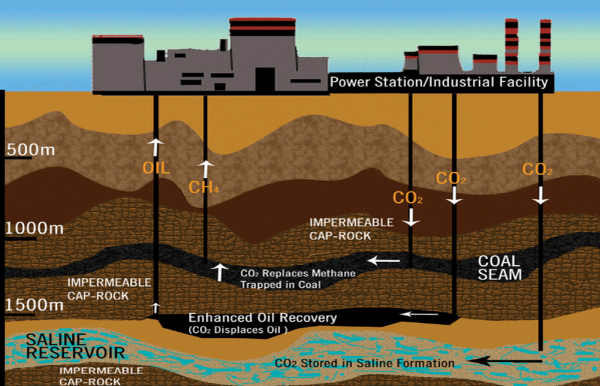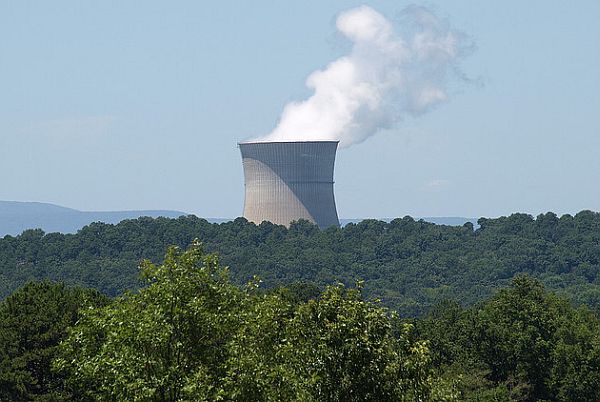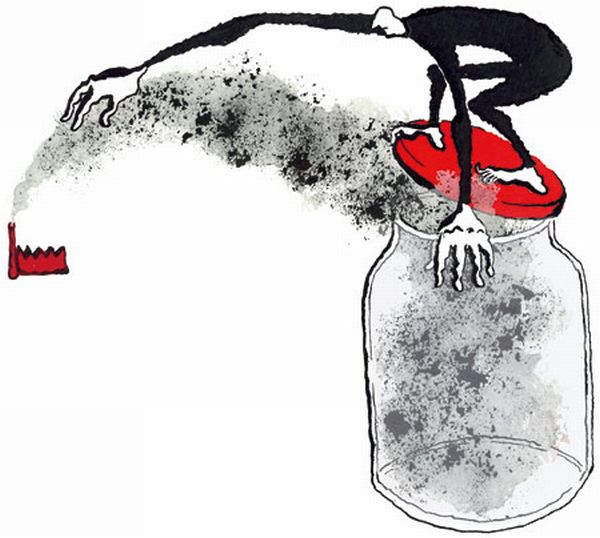
The link between climate change and carbon emissions has now been clearly established. The only argument being whether the serious consequences will happen in as less as 50 years or if we have more time. Meanwhile, the world will need to continue to build power plants, refineries, smelters and cement kilns as the large populations from the developing world attempt to improve their living standards.
The developing countries rightly argue that they cannot delay or deny the right to progress by holding back on industrial development until cleaner technologies are found.
Need for change
Since there are no immediate economic alternatives to CO2 causing manufacturing processes, an attempt is being made to capture the CO2 at the point where it is produced instead of sending it into the atmosphere. This is a very expensive process. For example, fitting a coal burning power station with equipment to strip the CO2 from flue gases is estimated to cost close to $2 billion and will use up 40 percent of the power produced. Pipelines to transport CO2 to safe storage sites will cost close to $1.7 million per kilometer. Despite these impossible costs, several projects are under way round the world to capture and store CO2 with billions of dollars being spent. This is because the potential costs of disruptive climate change will be even higher.
Once captured and transported, there still remains the issue of where the CO2 can be safely stored. If there is any leakage from the storage, all the effort and cost of capture and storage would have been wasted. Storage is being attempted in depleted oil and gas wells, under the sea at extreme depths and so on.
Some new projects are being attempted to store CO2 safely in natural rock formations. The world awaits the results of these experiments in the hope that some solutions will emerge.
What’s next?
1. Carbon storage project

What’s new?
Kevin Dome is a natural porous rock formation in the state of Montana that has CO2 trapped under it from millions of years ago from volcanic activity. The rock formation covers 700 square miles. Researchers from the University of Montana have started a project to study if this natural rock formation can store man made CO2 gas. The project is funded by a $67 million grant from the US Department of Energy and $17 million from private investors. The plan is to drill test wells to release some of the natural CO2 trapped under the rock formation, pipe it to the northern side of the rock formation and re-inject the gas into new holes which will be capped with impervious material. These tests will help the researchers to confirm that the porous rock can store CO2 and that capping will contain the CO2 and prevent leakage into the atmosphere.
What difference will it make?
If the early trials are successful, the plan is to store 0.125 million tons of man-made CO2 into the structure each year, for a total of 1 million tons for the entire project. The storage and capping will include pressure transmitters to monitor for leakage. If the experiments yield satisfactory results, the Kevin Dome could become a major repository for CO2 captured from power plants and industrial projects in the region. The data would also help locate other rock formations around the world with similar characteristics that could be developed for carbon storage.
Problems
The 8 year project time line underlines the long period needed to find places to store sequestered carbon. The project aims to store only 1 million tons of CO2 over 8 years, whereas the global emissions are in billions of tons each year.
2. CarbFix

What’s new?
The CarbFix is another experiment to store CO2 in underground natural rock. This experiment is being conducted at Reykjavic in Iceland at the site of a geothermal power plant. Geothermal energy uses underground hot water springs, caused due to volcanic activity. The wells drilled to bring this hot water to the surface also release the CO2 gas trapped underground. An international team made up from the Iceland and Columbia universities will collect this CO2 gas and pump it into another underground well, where the gas will be dissolved in water. The resulting acid will be pumped into the porous basalt rock. The acid will react with the calcium in the rock to form calcium carbonate, an inert material found widely in nature. The scientists expect the calcium carbonate formation to occur within 6 to 12 months.
What difference will it make?
The formation of calcium carbonate in nature is a slow process, where rain water with dissolved CO2 from the atmosphere weathers rocks over many years. The scientists hope to be able to speed the process up. Storing CO2 gas in capped wells, always has the risk of leakage due to damaged seals or due to geological activity. Converting it into benign calcium carbonate will solve those concerns.
Problems
As with other scientific experiments, the scale up will be a long process and there is the challenge of finding suitable sites around the world where this technology can be applied.
3. Abu Dhabi’s Carbon Capture and storage project

What’s new?
This project, coming up in Abu Dhabi, plans to capture CO2 emissions from three future plants, an aluminum smelter, a steel plant and a hydrogen based power station and send the gas through a 300 km pipeline to the state oil company ADNOC. The oil company will pump the gas into their oil wells to enhance yield. The CO2 is expected to remain trapped in the oil reservoirs for ever. The project aims to sequester 5 million tons of CO2 per year.
What difference will it make?
The Abu Dhabi project could be the forerunner in thinking about the location of future industrial projects. If these sources of CO2 could be sited close to some potential sinks for the CO2, such as oil reservoirs or underground mines, the total cycle of carbon capture and sequestration can be accomplished at comparatively lower costs.
Problems
The 5 million tons of CO2 being sequestered in this project is only a small fraction of the total emissions, even from Abu Dhabi. Industrial plant location is determined by factors such as raw materials, resources and infrastructure availability. Adding CO2 capture as another factor would add to the complexity.




